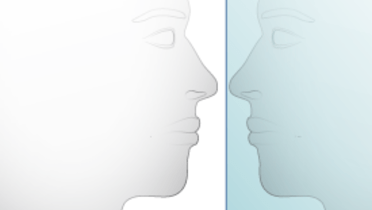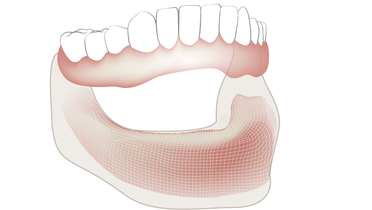-
0
Patient Assessment
- 0.1 Patient demand
- 0.2 Overarching considerations
- 0.3 Local history
- 0.4 Anatomical location
- 0.5 General patient history
-
0.6
Risk assessment & special high risk categories
- 5.1 Risk assessment & special high risk categories
- 5.2 age
- 5.3 Compliance
- 5.4 Smoking
- 5.5 Drug abuse
- 5.6 Recreational drugs and alcohol abuse
- 5.7 Parafunctions
- 5.8 Diabetes
- 5.9 Osteoporosis
- 5.10 Coagulation disorders and anticoagulant therapy
- 5.11 Steroids
- 5.12 Bisphosphonates
- 5.13 BRONJ / ARONJ
- 5.14 Radiotherapy
- 5.15 Risk factors
-
1
Diagnostics
-
1.1
Clinical Assessment
- 0.1 Lip line
- 0.2 Mouth opening
- 0.3 Vertical dimension
- 0.4 Maxillo-mandibular relationship
- 0.5 TMD
- 0.6 Existing prosthesis
- 0.7 Muco-gingival junction
- 0.8 Hyposalivation and Xerostomia
- 1.2 Clinical findings
-
1.3
Clinical diagnostic assessments
- 2.1 Microbiology
- 2.2 Salivary output
-
1.4
Diagnostic imaging
- 3.1 Imaging overview
- 3.2 Intraoral radiographs
- 3.3 Panoramic
- 3.4 CBCT
- 3.5 CT
- 1.5 Diagnostic prosthodontic guides
-
1.1
Clinical Assessment
-
2
Treatment Options
- 2.1 Mucosally-supported
-
2.2
Implant-retained/supported, general
- 1.1 Prosthodontic options overview
- 1.2 Number of implants maxilla and mandible
- 1.3 Time to function
- 1.4 Submerged or non-submerged
- 1.5 Soft tissue management
- 1.6 Hard tissue management, mandible
- 1.7 Hard tissue management, maxilla
- 1.8 Need for grafting
- 1.9 Healed vs fresh extraction socket
- 1.10 Digital treatment planning protocols
- 2.3 Implant prosthetics - removable
-
2.4
Implant prosthetics - fixed
- 2.5 Comprehensive treatment concepts
-
3
Treatment Procedures
-
3.1
Surgical
-
3.2
Removable prosthetics
-
3.3
Fixed prosthetics
-
3.1
Surgical
- 4 Aftercare
概述和重要注意事项
Key points
- 虽然预防工作和修复治疗取得了显著成果,但很大一部分中年以上患者仍然缺齿,治疗需求增加;随着年龄的增长,缺齿的可能性增加
- 缺齿治疗需要处理美齿、功能和生物力学难题,并解决患者的心理/行为状况和与年龄有关的问题
- 对于大多数缺齿患者而言,全口义齿治疗通常有助于获得可预测的令人满意的生活质量,但它并不是缺齿患者的灵丹妙药,因为有些患者可能在口腔修复的过程中存在适应不良
面容与社会交往
虽然人的面部只占身体的一小部分,但它体现了我们的社会身份,是人际交往的重要桥梁。面容体现出遗传特点,同时受疾病和外伤影响;更为普遍的现象是,未治疗或治疗不良的缺齿也会对面容产生影响。后者会对部分面部骨骼带来危害,使上层软组织形状发生扭曲,导致不同程度的功能受损。在人们的观念中,面容受损的影响不亚于人体部位缺失。其处理不仅需要临床医师掌握专业技术,而且需要切身感受患者的恐惧和愿望;更重要的是了解患者的个性。
缺齿的处理
在公共卫生环境下,缺齿由牙病以及文化、经济和态度因素共同引发。全口义齿处理几乎适用于所有病例,并且价格相对低廉。对于大多数缺齿患者而言,临床技能通常有助于获得可预测的令人满意的生活质量,并在处理患者行为以及与年龄有关的问题和疾病方面获得满意效果。但是,全口义齿并不是缺齿患者的灵丹妙药,因为数目不详的患者在口腔修复的过程中已经存在或最终将出现适应不良。
发布的报告表明,全口缺齿目前呈下降趋势,并且将来还会不断下降。但是,由于人类寿命延长,口腔修复治疗的需求仍然很大。
优化临床管理和健康策略方面的问题仍然令人关注:
- 缺齿造成的心理和生物力学后果不可低估,而未得到满足的全口义齿治疗需求仍然很高,甚至在一些工业化国家/地区亦是如此。在一些国家/地区还可能呈现增长趋势。
- 很大一部分中年以上患者仍然缺齿,治疗需求增加。
- 长期缺齿需要制定各种(如未确定)处理方案,预计需要复杂棘手处理方案的缺齿患者的人数会出现显著增长。



